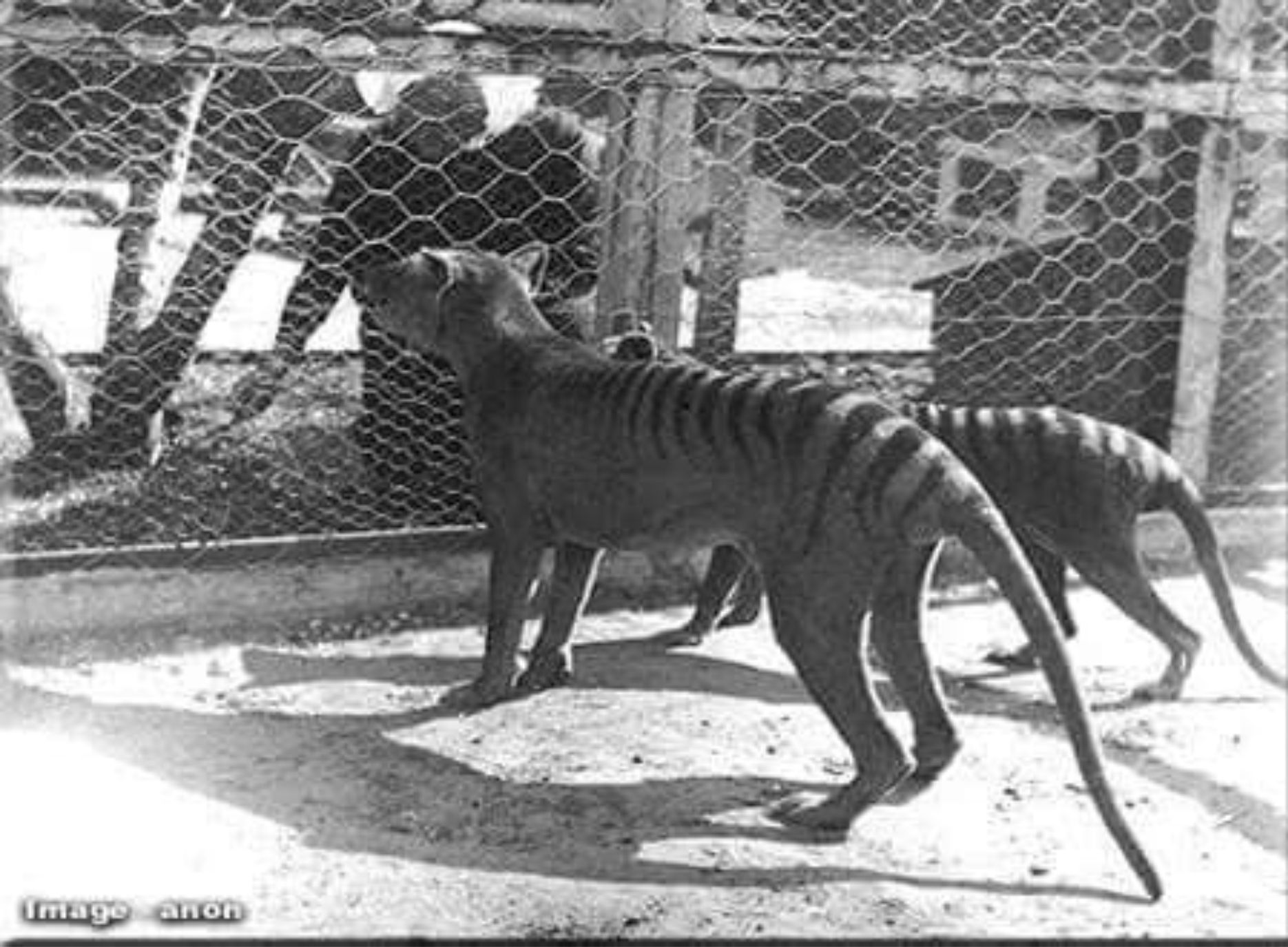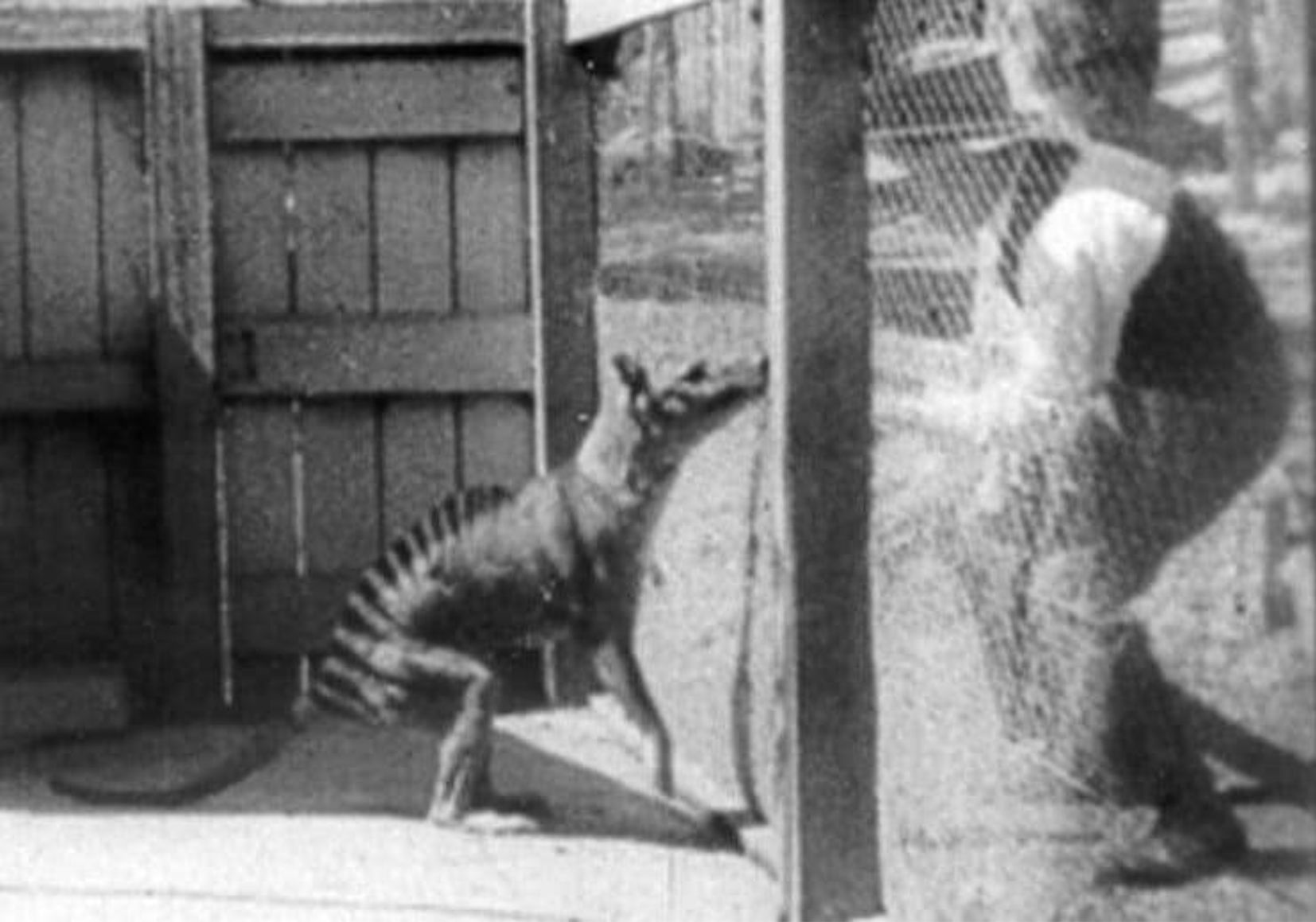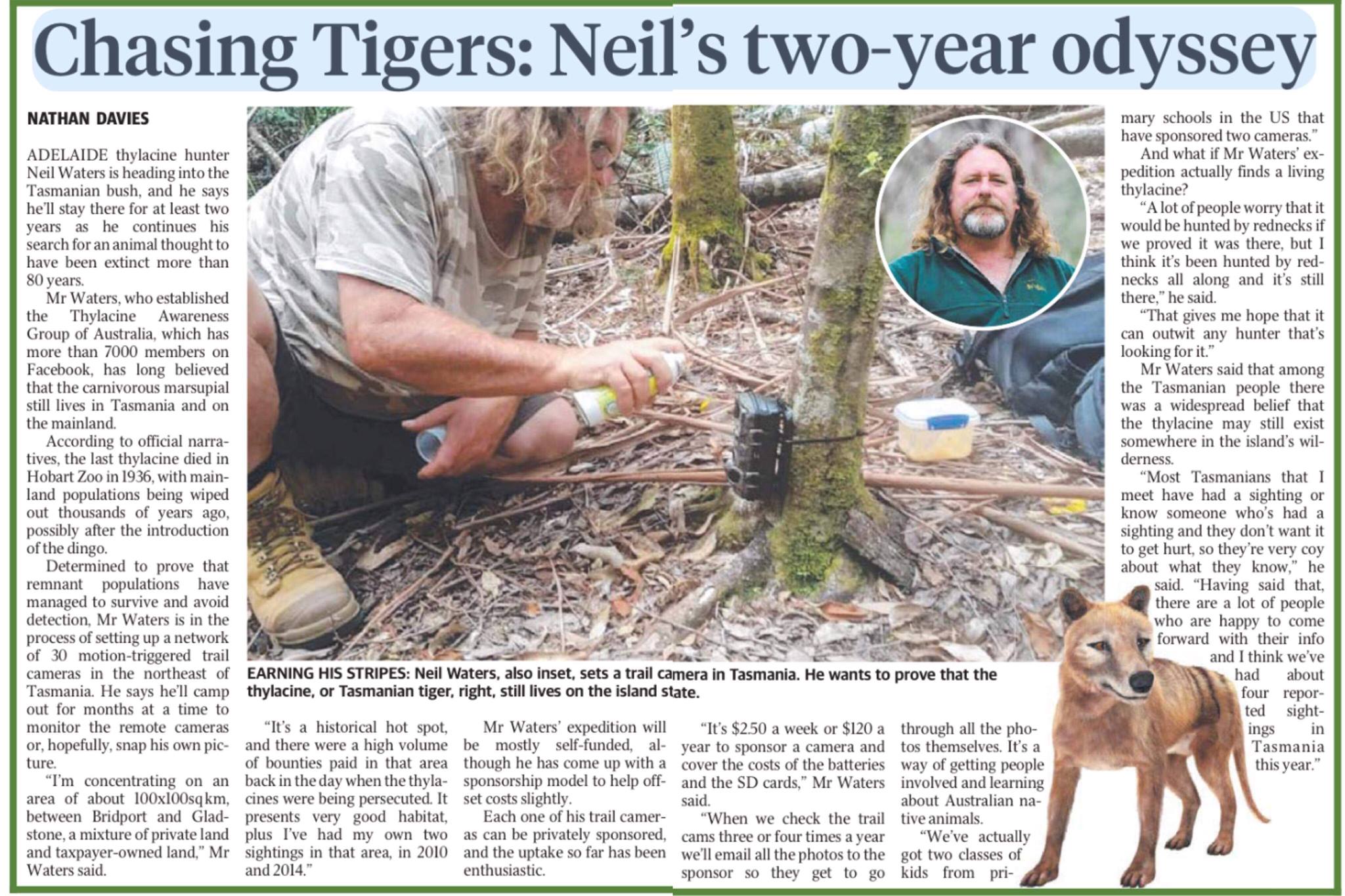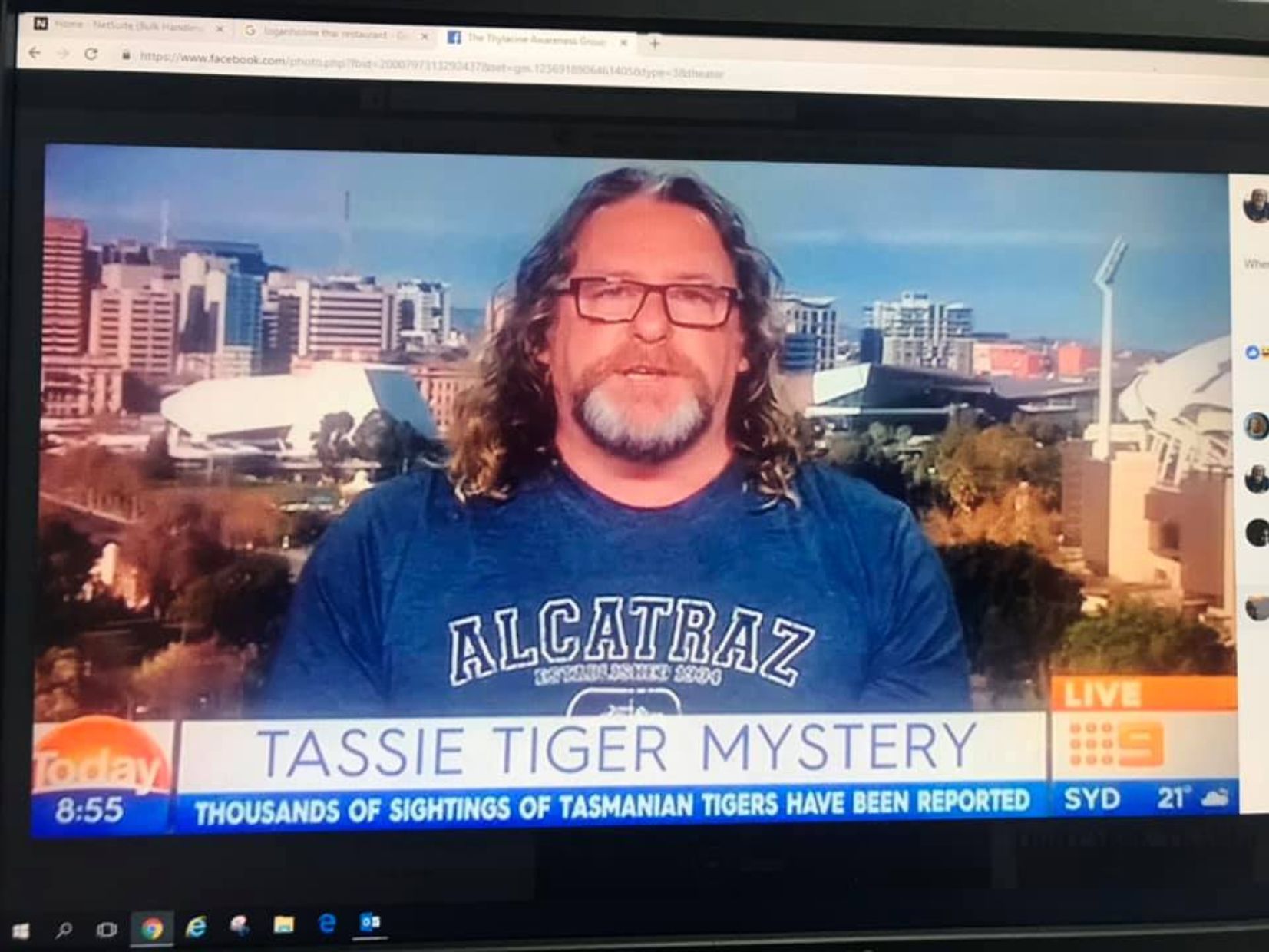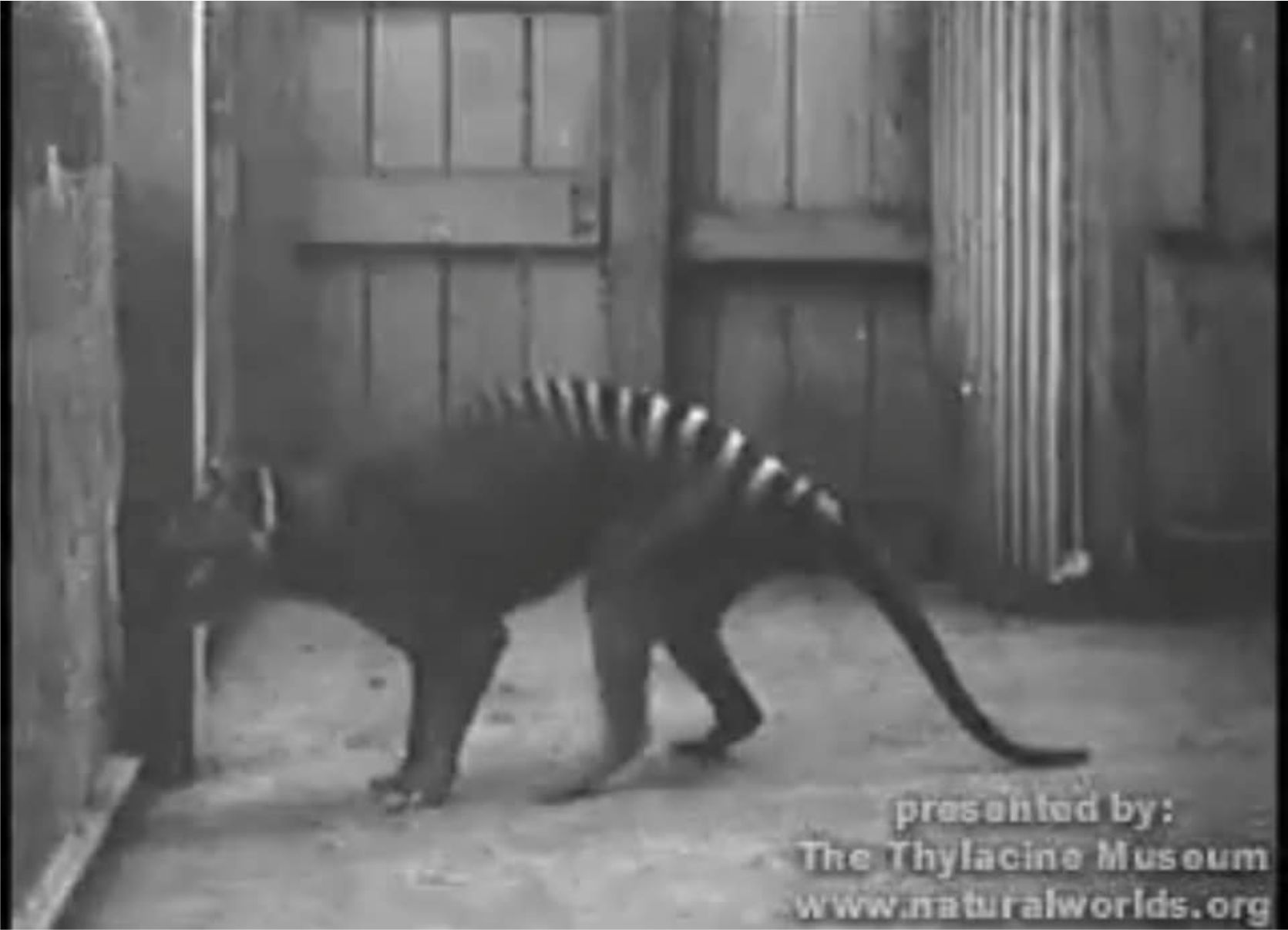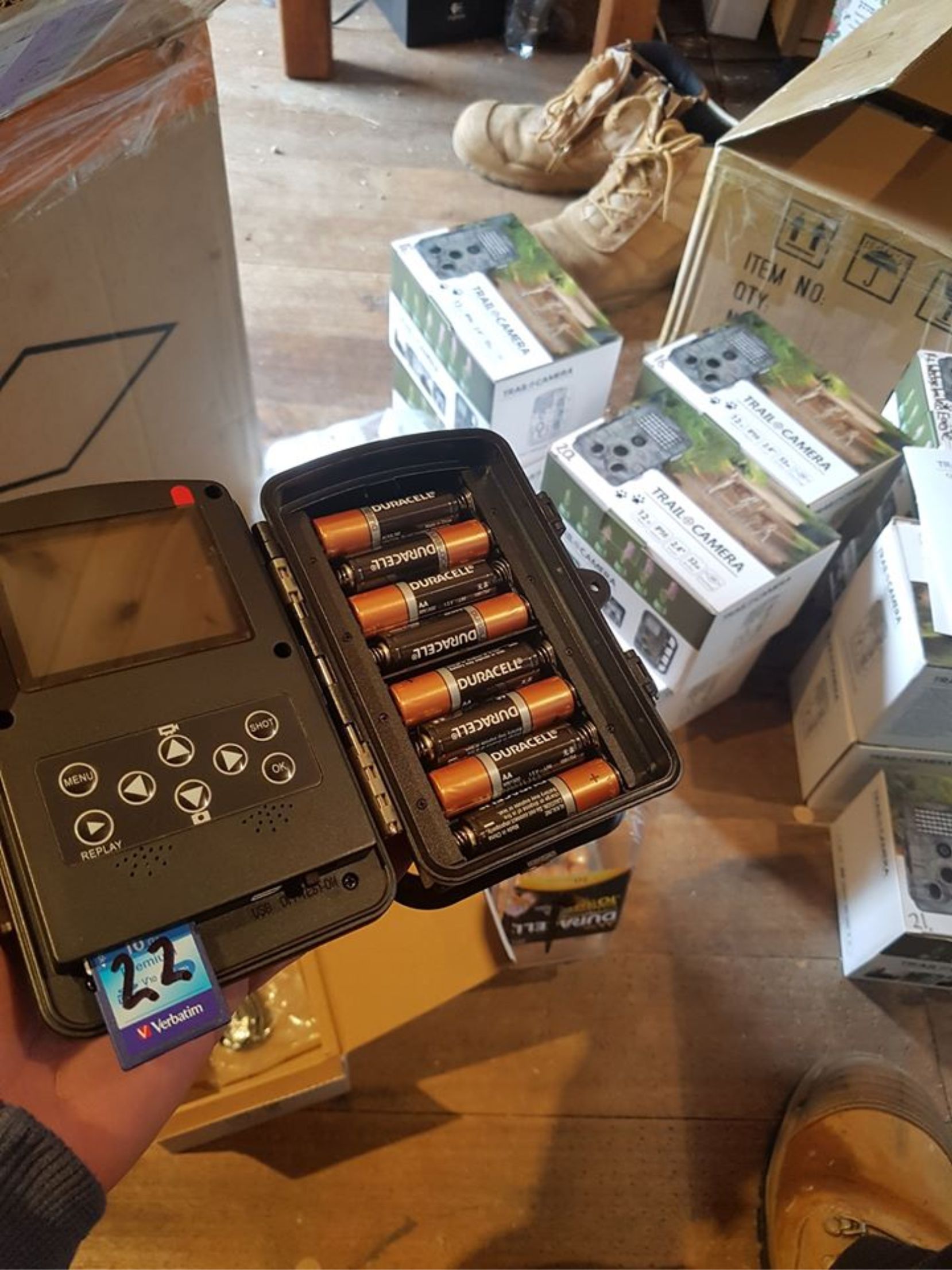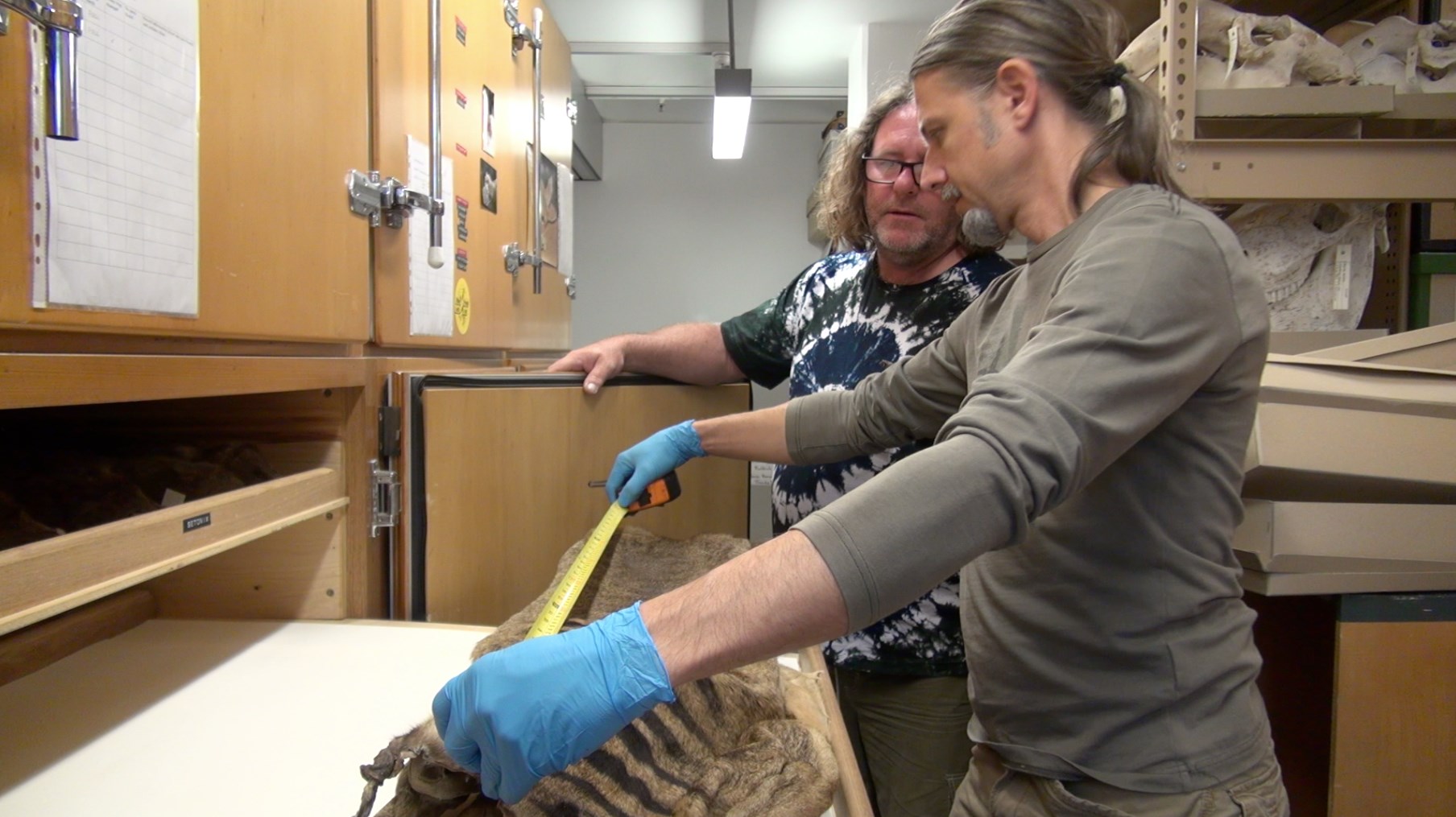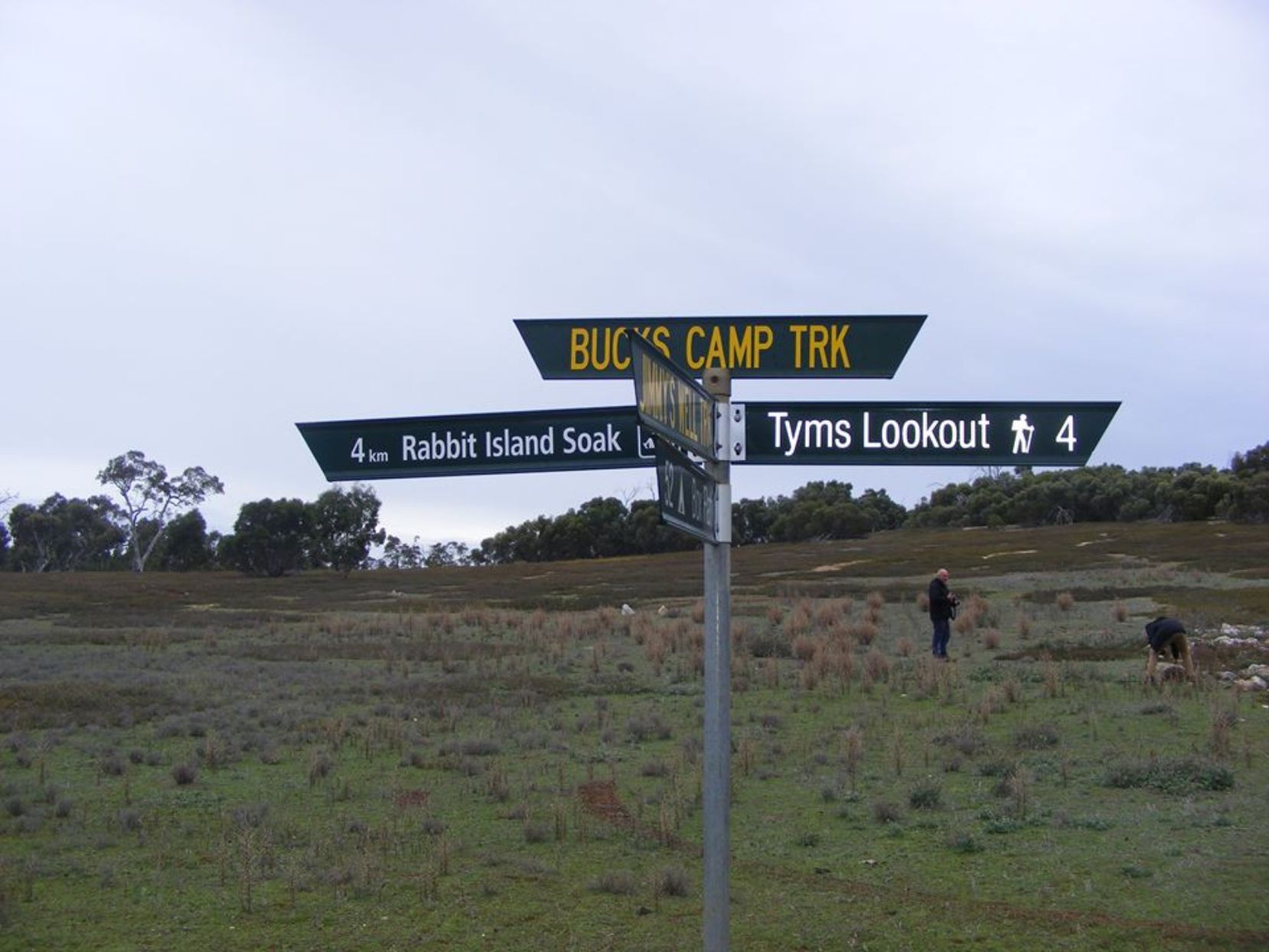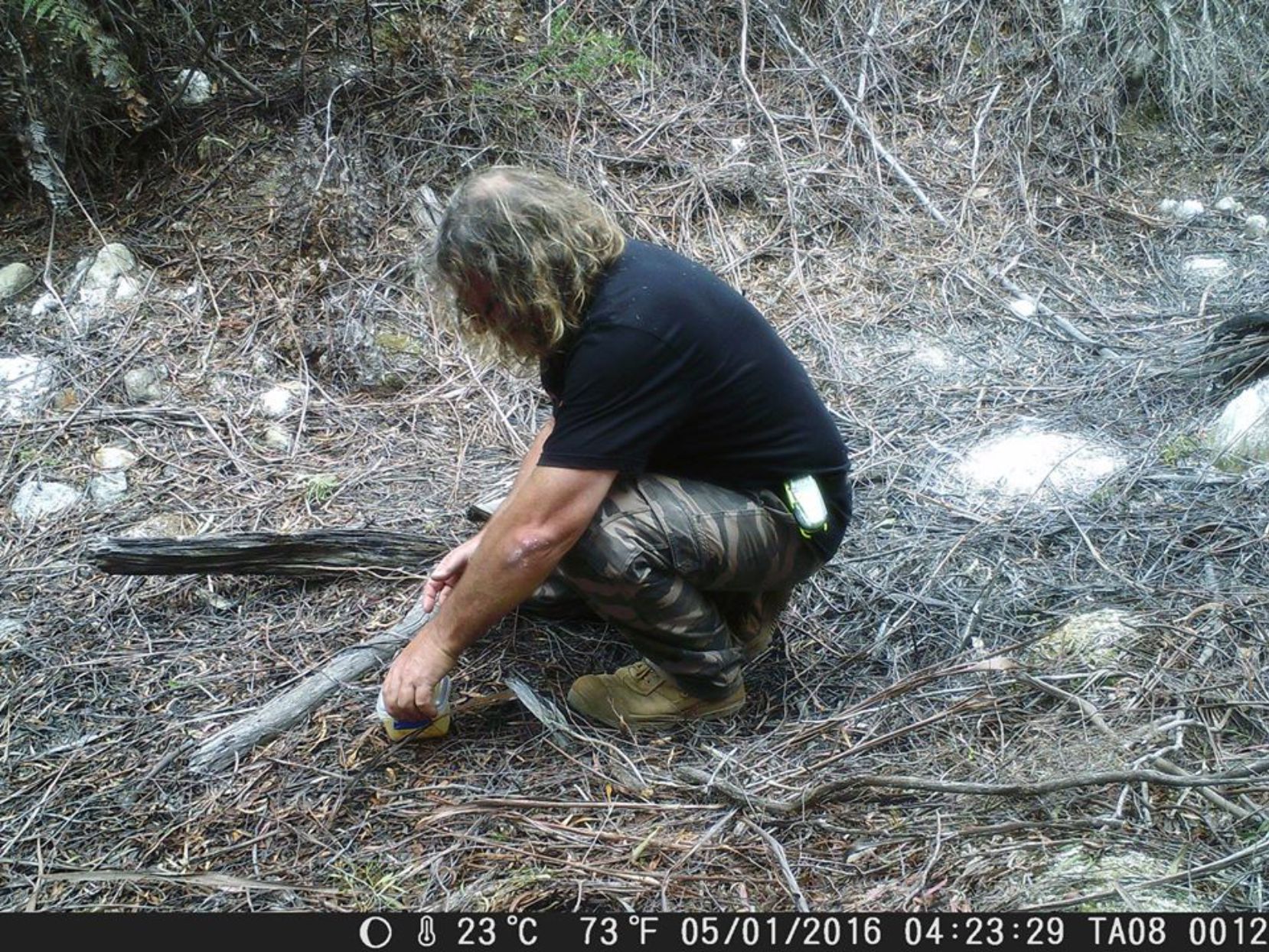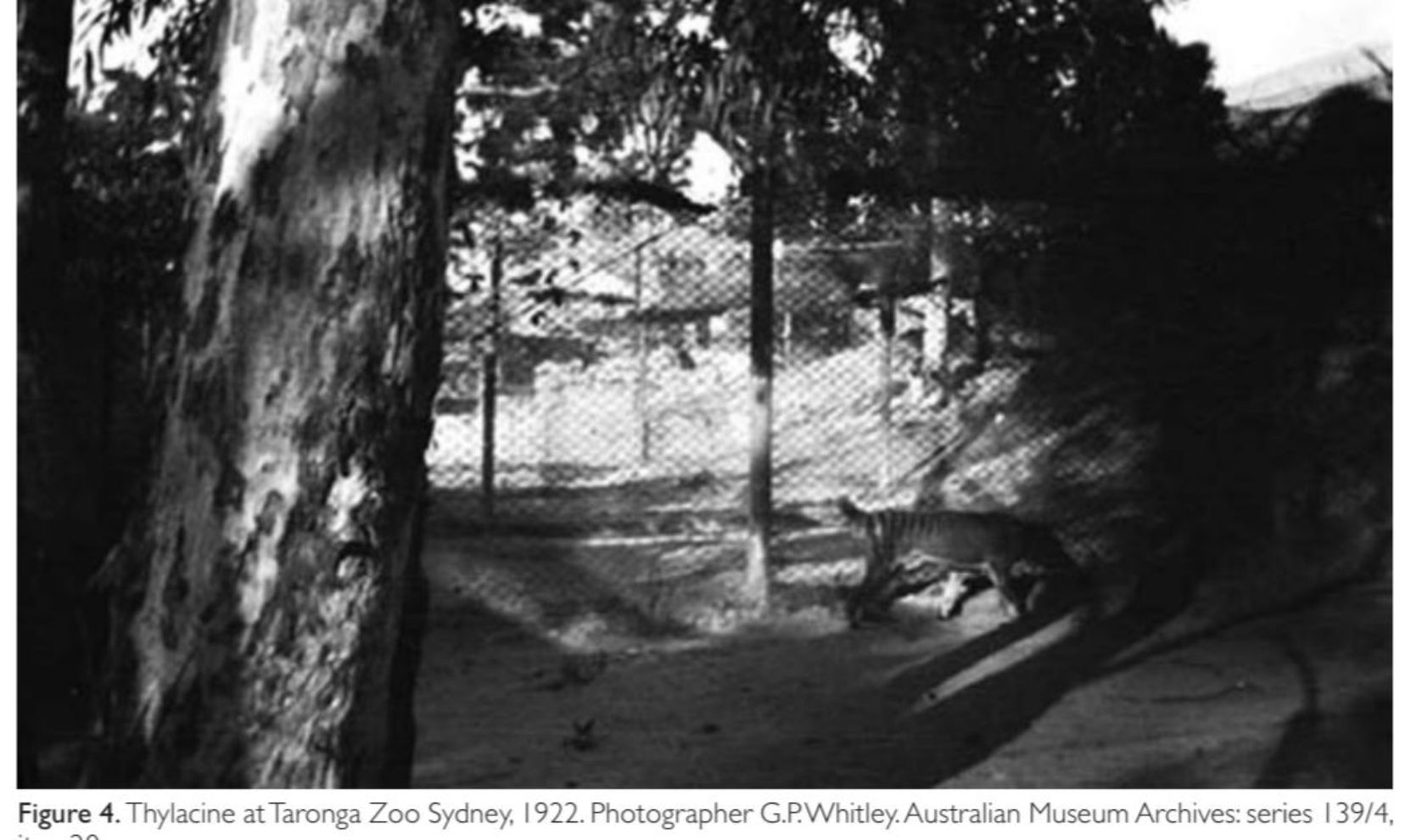All photographs and images reproduced in this note, are courtesy of Neil Waters and The The Thylacine Awareness Group of Australia (TAGOA).
Entrevista exclusiva a Neil Waters en español
AQUÍ
For those who follow our section on Thylacine in our magazine, this topic will not be strange. But there are many who, perhaps, will be making contact for the first time with this very important subject for nature and conservationism, so I will spare no effort in making them aware of what it is about.
The last specimen of Thylacine, also known as Tasmanian Tiger, or Marsupial Wolf, and many other names by which it is commonly known, died on September 7, 1936 at the Hobart Zoo in Tasmania, Australia. He had gotten there three years earlier. It was officially declared extinct in the 1980s.
Several were the causes that led to his disappearance, it is not now the case to remember them, the important thing in all this, is that perhaps, the Thylacine, is not "as extinct" as it seems, due to the innumerable testimonies of sighting that are taking place for decades, being the 1960s, when they began to multiply.
There were hundreds and hundreds of testimonies that were added, but none with enough strength to say that the species has managed to overcome extinction.
But this question of the "Tylacine extinction " is not shared at all by our interlocutor in this note. He is convinced, with strong evidence to his credit, that the species is still around, and in a significant number due to the number of sightings that have been happening.
Neil Waters created The Thylacine Awareness Group of South Australia on November 22, 2014, eight months after his second sighting of a Thylacine in northeast Tasmania.
Then The Thylacine Awareness Group of Australia took on more strength when Neil joined John Maguire. Their goal was to make a visual record of their efforts, culminating in "LIVING ... the Thylacine dream", their feature length documentary film released at the "Nannup Tiger Festival" on National Day for Endangered Species in 2017.
Since then they have embarked on many investigations in both mainland Australia and Tassie (Tasmania) which have now gone "digital" with the creation of TAGOA´s new Youtube channel.
For a few months now, Neil has embarked on a two-year research project, in the Northeast Tasmanian field, in order to obtain that irrefutable photo of a Tasmanian Tiger, and DNA evidence of a species obtained in the same field.
In September 2019, TAGOA became an Incorporated Association, which means that it is a non-profit organization and is governed by its own regulations.
In this way, Alpinismonline Magazine, through its director, Carlos Eduardo González, who writes this note, contacted Neil, who kindly gave us his exquisite testimony, in this interview we held between Buenos Aires and the same field of operations in Northeast Tasmania, between July 22 and 25, 2020. The objective is to provide us with a complete overview of the Thylacine issue, past, present and future of your project, and how we can contribute to it.
Regarding the latter, well, the best way to contribute to Thylacine on our part is to spread this topic, which can reach readers who may have never heard of the species, who become aware of it. and that they are interested and perhaps, they can spread this very important subject, for the species, for the nature, and for the whole subject of conservationism for which we have been struggling in AOL.
In particular, when I came in contact with this final interview that Neil sent me, I could not help but be amazed, especially for everything I learned and that until now, although my interest in the species comes from a few years ago, I was not knowing.
That interest in Thylacine made me incorporate the section within our magazine by the end of 2019 and thus be able to continue with the progress of the project for all Spanish-speaking readers, in this part of the world, in the antipodes of the "countryside of Neil´s operations ".
I cannot stop expressing my deep gratitude to Neil for this invaluable testimony. As proof of this, we will publish this note in parallel in both the Spanish language, which is the version we are seeing, and in the English language, so that the scope can be much greater.
So let´s get down to business. I leave you with Neil Waters, the main person in charge of, The Thylacine Awareness Group of Australia (TAGOA).
Neil, you mention on the TAGOA site that you started this whole project back in 2014, after the second sighting of a Thylacine. When, how, and under what circumstances did these sightings occur?
The first sighting I had was in 2010. I was walking my dog by the lake near my house and she took off chasing after a small Wallaby. I was yelling out for her, but she would not come back, so I proceeded along the path to the lake. As I walked along, I could hear something walking in the bush parallel to me and every time I stopped it stopped. Something was stalking me. This made me feel a bit uneasy as I knew it was an animal from the footsteps breaking twigs and crunching under it. Eventually after about 15 mins, I came to a small clearing and kept yelling for my dog, but she still didn´t come. The animal then came out from behind the shrubs and sat behind a clump of grass watching me. I tried to get closer and it was sitting up like a dog and I could see the tips of its ears. Finally, I got too close to it and it took off. I saw the right side of the animal and it was a dark brown chocolate colour. I didn´t see stripes, but it had the long stiff tail and I was well aware of what it was then that had been following me, it was definitely a Thylacine. Not a massive one but a fair size.
The second sighting was from my bedroom window in 2014. I have French windows in this room that open outwards. I had the fire on in the loungeroom and it was getting quite stuffy in the house, so I went to the windows to open up and let in some fresh air.
Neil Waters started The Thylacine Awareness Group of South Australia on the 22nd November 2014
It was a very moonlit night at the time and visibility was quite good. There are always small wallabies in my yard at night and sometimes possums or wombats grazing on my lawn.
I was just staring out the window at the small dirt road that runs past my property boundary when a small Thylacine came trotting past and went towards the rd where I lost sight of it.
Again, I can´t say that I saw stripes, but the shape was very typical of what I know to be a Thylacine with the long stiff tail. A lodger at my place had a similar encounter about 7 months later whilst sitting on the veranda at night having a cigarette.
Archive photos of Thylacino in captivity
Archive photos of Thylacino in captivity
Did you already know about Thylacine or all the interest started at that time?
I was aware of the animal from my school days after seeing it in a book where it was still classified as an endangered species. After my 1st sighting, I was very alert of their presence, but it was after the 2nd sighting that I decided to investigate what was going on and try to find out more information.
Let us pretend for a moment that the Thylacine disappeared after the death of the last specimen in 1936. Beyond the "human" factor, was there any other factor that affected its disappearance?
This answer is applicable to Tasmania only, but the readers MUST be aware that I will be talking about the Thylacine across the whole continent of Australia in nearly all of my answers. This animal has never been extinct on mainland Australia and it is the majority of the reason why I pursue this animal, not because of Tasmania. There are 3x as many sightings on the mainland than there is in Tasmania.
There is some speculation that there was a disease that made the numbers plummet, but I do not agree with this hypothesis. Most of them were caught in snares or pitfall traps and were not shot. I believe that the remaining numbers simply were the smarter individuals that remained after the bounty was lifted and protection was granted. With a remaining population of smarter individuals left to rebuild the species, I believe they were forced to become a lot smarter through human interference and that is why they seemed to "disappear". The ones that died in zoos and were sick upon arrival were subjected to horrible conditions and incorrect diet for months on end travelling by ship across the world only to be shoved in poor conditions and fed mutton and horse meat. These individuals were always going to get sick and die for the majority of times.
Thylacine orTasmanian Tiger
Now let´s pretend that it didn´t disappear after 1936. Why could it not have disappeared?
Australia has extremely diverse and harsh conditions from deserts to the snowy mountains to rain forests and coastal hinterlands. There is ample habitat for it to remain hidden for the majority of time. It is an opportunistic hunter/predator that has very specific dietary needs. These needs are easily adapted to other species of mammals when it´s main prey are not readily available, or a easy catch presents itself.
The other important factor in all of this is that the sightings data reflects it being extremely well adapted to ANY of the terrain and climatic conditions that Australia presents. So, even in areas of heavy farming and timber felling there are still many sightings. The other important factor too is it leaves evidence of its feeding behind often, i.e. Headless Kangaroos that have had their lungs and hearts eaten.
Of all the hundreds and hundreds of testimonies that exist about its existence after 1936. The most exemplars are published on the TAGOA site and they really are surprising. What is the most forceful for you and why? Without considering your own sightings of course.
Without trying to remember one particular sighting, I guess it is the consistent factors that continually appear in witness testimony, i.e. the unusual gait or locomotion of the animal, the long stiff Kangaroo "like" tail, the stripes ( not always though ), the big head and thick neck.
Often too, these sightings have multiple witnesses with virtually no pre-conceived notion of the animal or expectation to see it. Many time´s there has been tourists here in Australia that have seen it and have no idea what it was but describe it perfectly and are shocked when they learn that the animal is meant to be extinct. Often too, people who know animals extremely well, hunters, farmers and even park rangers witness the animal, yet still get laughed at by the media or the Govt. Sometimes the animal is witnessed hopping like a Kangaroo for 10m or so and then goes down on all 4´s and runs at great speed to evade the witnesses. There was one sighting in Western Australia in the 1980´s where an entire busload of people on a wildflower tour witnessed a Thylacine in broad daylight...
Why do you think the species is so "elusive" to the human being? Is it nature itself that is protecting it in some way?
Most apex predators in Australia instinctively avoid humans. Sometimes they will get to know you if you persist in their area. I have had this with Wedge tailed eagles that have gotten to know my car and that I present no harm to them, so they don´t always panic and leave. Again, herbivores will do this after a while too, so I guess it is in their nature to avoid humans as we are usually a sign of bad stuff being about to happen when we turn up in nature...
Archive photos of Thylacino in captivity
Now let´s go a little bit to your homework in Neil field. How do you finance this project? Do you have any government support?
Last year I resigned from my position with the South Australian Govt and took a small redundancy package so that I could return to Tasmania and commence the project I am currently undertaking. I asked some close friends from within TAGOA, if they would be interested in helping me form a committee so that we could become an Incorporated body, and use this as the vehicle to raise some funds to support what I am currently doing. TAGOA TAS INC was incorporated in August last year and we formed the "Thyla Army", revamped our website and started to produce more film content for our highly popular Youtube channel run by my good friend John Maguire. This has proved to be very popular and a great way to support both Facebook and our website traffic numbers.
At the same time, I decided that I would intensify the searching capacity by importing trail cameras directly from China, to save a few dollars so we had a better chance of getting some clear footage of a Thylacine in the wild. All up we have 50+ cameras in the field.
Cameras
As a part of the paid membership of TAGOA TAS INC, I decided to create 3 levels of membership. The highest level being sponsoring a trail camera for $120 a year to help offload some of the costs that I incur personally, but to also make TAGOA TAS INC financially viable and fluid. This has proved to be extremely popular and I am now at a point where I have sponsors for every camera, I have available, including my own personal ones that are used as fill in/ back up cameras if some get stolen, damaged or simply fail.
We are now at a point where we must make a decision regarding importing more cameras or simply soldiering on with the ones we already have. This sponsorship covers the cost of the camera and offsets the cost off batteries and SD cards to minimise my personal costs. I/we TAGOA receive $000,000,000 assistance from the Govt both state and federal. This is a cost that I am prepared to live with, and should we get clear footage of a Thylacine, then I would expect that we may be able to negotiate some funds for our efforts, rightly so.
Cameras batteries
How do you carry out the arduous task of controlling and verifying all the deployed cameras? Does that task take you full time? How is the work of verifying the collected material?
The task of setting up, testing, and hiding all of the cameras is very time consuming and I am currently in the middle of bringing them all in to check the cards. I am pretty much a one-man operation in this task as I know where they all are and keep written maps of the locations so that I am not scratching my head too much trying to find them. I made the mistake of relying on GPS technology in round one which is not always very accurate and this cost me the loss of camera 24....I usually try to leave them out for 3-4 months at a time to allow for maximum exposure and the animals getting used to them being there.
Going through all of the cards is a very long and laborious task that can take ages to do. Round 1 returned over 35,000 videos and photos to be examined....Should we be lucky enough to get irrefutable photographic evidence, then it will need to be verified by a photo analysis expert to confirm no photoshopping has been undertaken and the images are 100% legitimate.
What area of the island of Tasmania does your work focus on?
Because I have a limited budget and animals close to my home, Tassie Tiger Lodge, I focus on the NE area of Tasmania to keep fuel costs to a minimum. However, TAGOA has members all over Australia with TAGOA´s other cameras, plus members personal cameras all trying to get the proof we all seek.
What other elements collected in the field, beyond any film document, can serve to have any certainty regarding the existence of the Thylacine? Do you already have enough material of this type?
So far, we have 5 different vocalization recordings we have collected and had donated to us for this search as reference material. We also have many, many spoor samples,( print casts ), that are very similar from every state of Australia that match historical sketches of known Thylacine feet, ( Pocock 1926 ).
On top of this, we have literally dozens if not hundreds of deceased animals both wild and domesticated, that have been killed in the typical Thylacine manner, i.e. head missing, lungs removed, blood drained from victim. ( Guiller )
So all in all, I believe we are on the right track and pushing in the right direction and it will be just a matter of time before we get clear footage or a deceased Thylacine is found and not taken to the Govt first but either us or the media. That way it won´t become "lost" in the system....
What is your interest, in your opinion, on the Thylacine issue, both in Australia and in the rest of the world?
I think the issue is one that won´t go away simply because people keep seeing it all over the place. I wanted to create a forum where witnesses felt safe and not intimidated. I also wanted them to be able to speak freely and be treated with respect. These issues have historically kept peoples stories from coming out in the public domain because they must have been drunk or high because Thylacine´s are extinct....But raising awareness of it´s continued existence was my goal and that I know I have achieved world wide so I am very proud of that accomplishment.
Are there other groups similar to TAGOA in Australia, or individuals looking for Thylacine? If so. Is there contact and exchange between you?
Yes there are a few. Most of them do not like me because of my persistence and refusal to allow them into our facebook group to cause havoc and behave like trolls. Many people have an interest in the animal in Tasmania and Mainland Australia and I am very happy to have helped inspire some of these people. I do believe the Thylacine as a survivor against all odds, offers people hope in a world that is full of bad stories where the environment often takes a back seat for either Govt or corporate greed. But to think that it is still hanging on in so many places and yet has avoided zoos for over 80 years, pleases me no end.
Is there a possibility that evidence of Thylacine may be found outside Tasmania in mainland Australia?
It already has, twice. Both the Mundrabilla cave, WA and Elluyellan Cave, SA, provided fresh carcasses for science to examine in the 1960´s but rather than go by the physical state of the animals, Scientists relied on carbon dating which in my view was clearly flawed. On top of that, there is the ongoing predator/prey evidence we continue to find frequently all over Australia. Hopefully, we find a deceased Joey/Juvenile soon and that will be the game changer for the Govt and Industry to deal with and make some alterations to the way they mis-manage our environment across the entire nation...
How much do you think that progress has been made since you started this project?
There has been a massive amount of eyewitness testimony granted to me from hundreds of people over the last 5 years. Science has no interest in this animal until DNA evidence is provided or very clear footage. Our aim is to produce a deceased juvenile animal through no hand of our own doing, but it is the only way that the IUCN will acknowledge the animal is not extinct. Clear footage however, means the Govt´s both Federal and State, can no longer ignore the cries of the masses and MUST provide funding and support research into the existence of this animal. Awareness of TAGOA and our mission is massive now thanks to my persistence and the support of our 8,000+ members for coming with me on this journey. This is real progress in the effort to have this animal recognized and potential changes be implemented so that its future conservation can be managed properly.
Until when do you plan to continue with the project? Always in the event that there is no precise film document.
I gave myself 2 years to achieve this, but realistically, I could probably survive financially a lot longer if I am careful with my spending. I am not employed by anyone and I do not receive any financial support from welfare at all so I do have a limit on my financial status, but so far so good. I will persist until I can no more and then I will have to consider my life goals once again. I´m 51 years old and still healthy enough to do the bush walking and mountain climbing that this project demands. If that changes for some reason, then I will cross that bridge when I get to it. Raising Awareness was my goal, and I have achieved that already beyond my wildest of expectations. This goal was crystalized in 2017 when John and I released our feature length documentary," LIVING...the Thylacine dream", so for me, I am living the dream every single day of my life and have many more good years left in me yet to explore our amazing country.
Before ending Neil, let´s go a little to that day in the future, hopefully next, close, where we have a certainty about the existence of the Thylacine. Something like "the day after." As if we were saying, "well, we already have it." How does the story continue? What would be the first steps to protect the species and how would they be carried out?
For me, I guess the first thing would be to blanket ban the use of 1080 poison nationwide. They drop that stuff from planes all over out country and the off-target damage to other species is horrendous. Secondly, stop all of this rubbish about cloning an animal that clearly ISN´T extinct. Thirdly, they are to be studied in the wild and not be allowed to be placed in Zoo´s, EVER. Governments have the technology they need to follow these animals and study them safely without hinderance but sadly, this technology is used for warfare and policing and never conservation efforts. I´m talking thermal imaging here and satellite tracking.
Also, this doesn´t mean we have to shut down mining or forestry practices, but if we were to be serious about protecting our environment then at least adopting Worlds best standards for these and other industries would be the way to go I would hope. If we aren´t already adhering to these standards then why not?
Finally, I am no expert on anything to do with any of these issues, especially the Thylacine, but I am a passionate man who cares about nature and I have attracted a lot of followers wit the same or very similar set of beliefs and ideals so collectively, we represent a vast variety of people who have had an amazing experience and witnessed something that only so many people get to see, a living breathing Thylacine. Possibly the worlds smartest most elusive predator that has survived against all odds despite science giving up on it many years ago.
What is the worst enemy of the living Thylacine? (And please consider everyone: dingoes, humans, everything.)
Ongoing ignorance and refusal to consider the available evidence by Govt´s Australia wide is the single biggest threat to the Thylacine´s survival. I do not agree with passive aggressive types of views that if it is there then leave it alone and let it be, whilst at the same time Govt´s sanction poison baiting and massive land clearance beyond belief. The vast majority of hunters I know are responsible decent people that just want the right to gather their own meat fresh from the field which is a basic human right that goes back to the dawn of mankind. I do not believe that hunters will go out and destroy these animals suddenly because they are acknowledged to exist. I have at least 4 sightings of them by hunters and they chose NOT to pull the trigger because they realized the significance of what they were witnessing. This animal needs to be acknowledged by Govt´s and stop hiding it from the people so that we can make allowances for its proper conservation rather than pretending everybody is seeing mangy foxes.

How do you imagine the coexistence between the Thylacine and the human being after his "rebirth"?
I pretty much see things the way they are now only with better management of our nations remaining natural areas and Govt´s nationwide putting the natural environment further up their list of priorities because as we all know, without ecology there is no economy...
Thank you for the opportunity to share my views with your readers. Regards, Neil A Waters.
Thank you very much Neil, for this invaluable testimony.
TAGOA LINKS for MORE INFORMATION
The Thylacine Awareness Group of Australia (TAGOA).
TAGOA Facebook Page
TAGOA´s new Youtube channel.

 1358 -
1358 -  0 -
0 - ![]() -
-
 -
227
-
227
![]()

